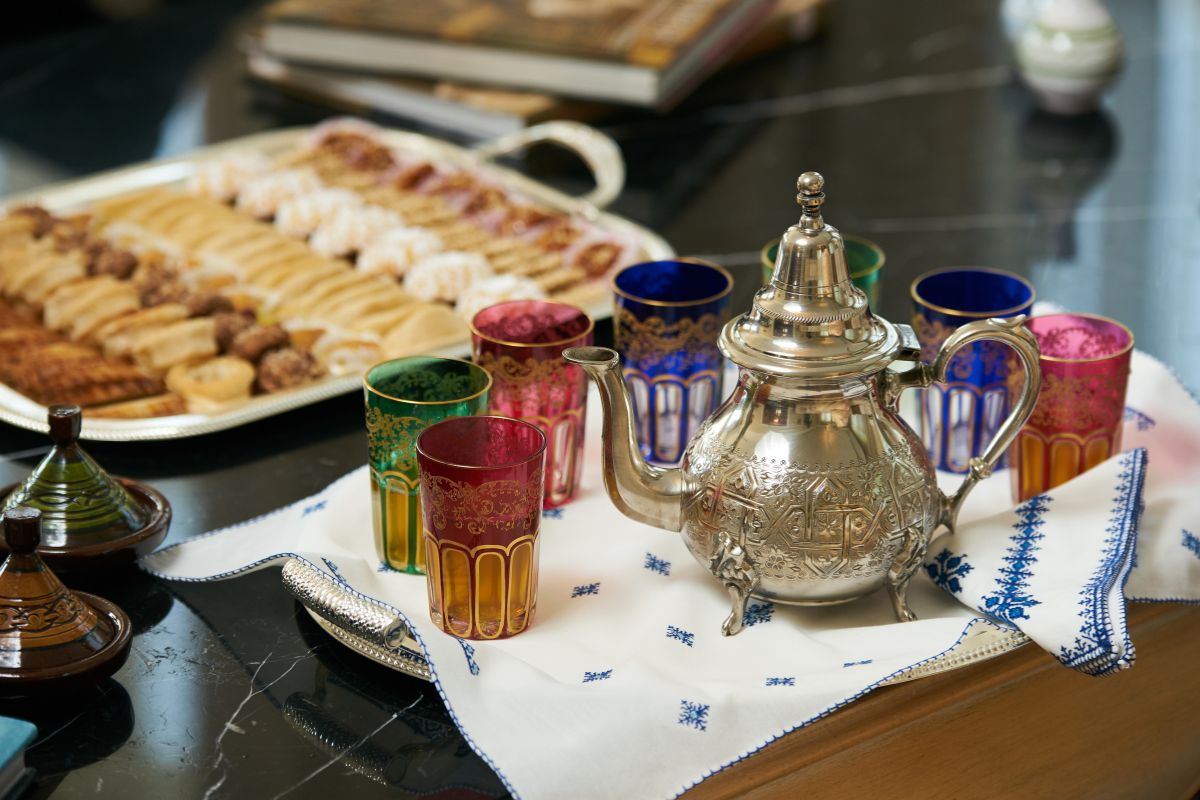
Morocco is a land of rich traditions, captivating landscapes, and a culture steeped in history. Among the many facets of Moroccan culture, one that stands out prominently is the art of tea-making. Moroccan tea, often simply referred to as “Moroccan mint tea,” is more than just a beverage; it’s a symbol of hospitality, a reflection of tradition, and an integral part of Moroccan identity.
The Ingredients: Green Tea, Fresh Mint, and Sugar
The core ingredients of Moroccan tea are straightforward: green tea, fresh mint leaves, and sugar. However, the magic lies in the preparation and the cultural significance attached to each element.
- Green Tea: The base of Moroccan tea is green tea, which is typically a Chinese variety. It is known for its robust flavor and slightly bitter undertones. Chinese green tea arrived in Morocco via trade routes, and it has since become an essential element of Moroccan cuisine.
- Fresh Mint Leaves: Fresh mint leaves, often spearmint or peppermint, bring a refreshing and aromatic quality to the tea. Mint is believed to aid digestion and is a key component of Moroccan cuisine. The act of steeping the mint in the tea adds a delightful fragrance and a burst of flavor.
- Sugar: Sugar, or more precisely, a generous amount of sugar, is a defining characteristic of Moroccan tea. While the exact quantity may vary according to personal preference, Moroccan tea is famously sweet. The sugar is more than just a flavor enhancer; it’s a symbol of hospitality and generosity. Moroccan hosts take pride in serving tea that is as sweet as their hospitality.
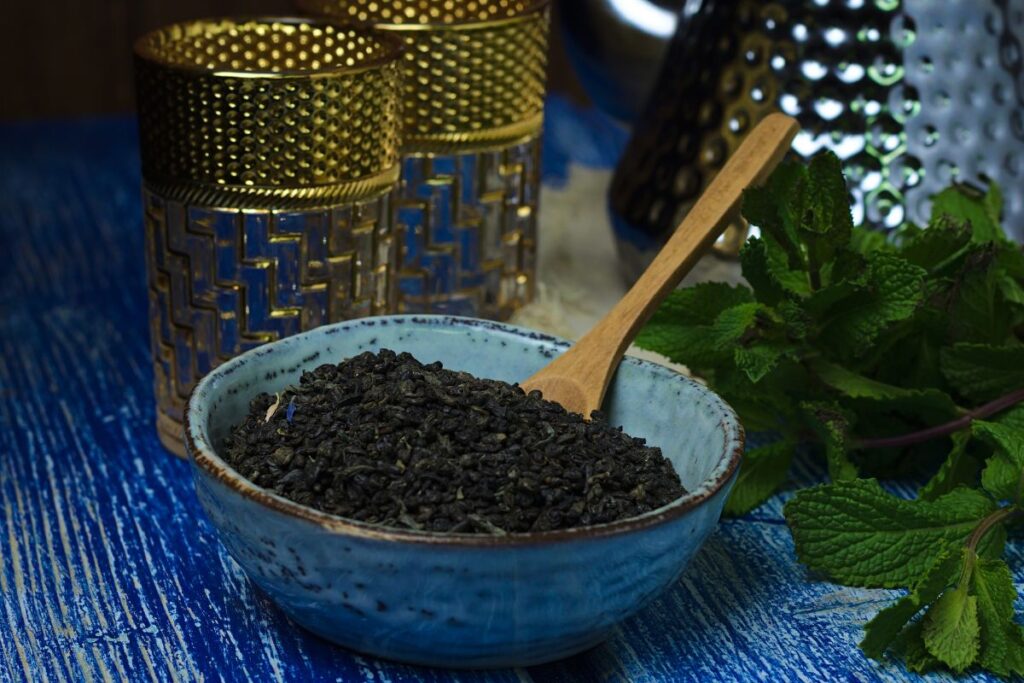
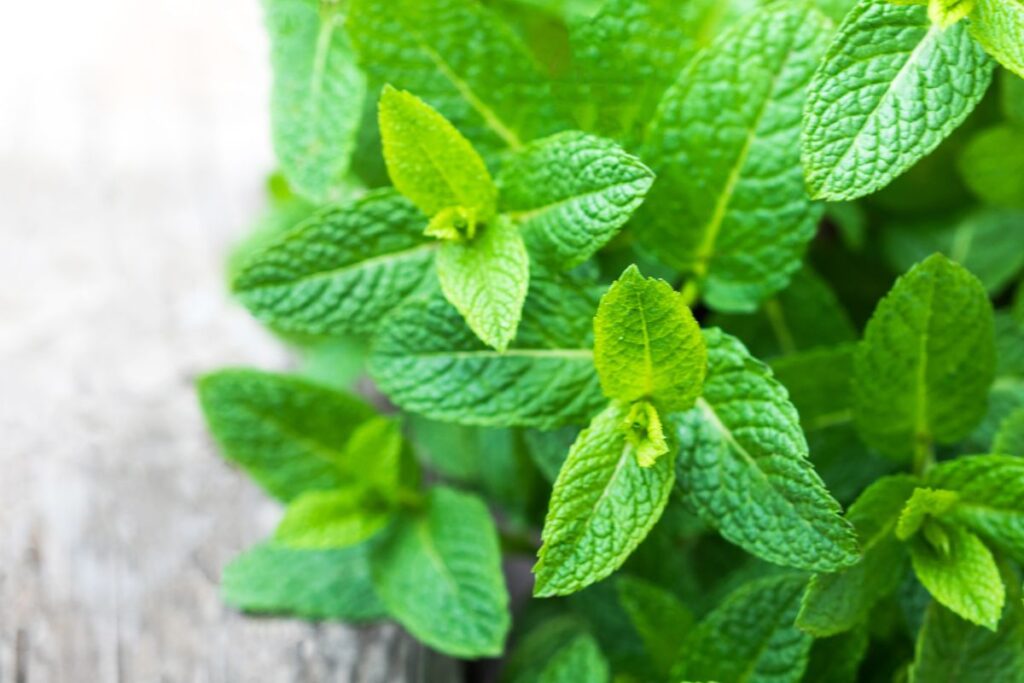
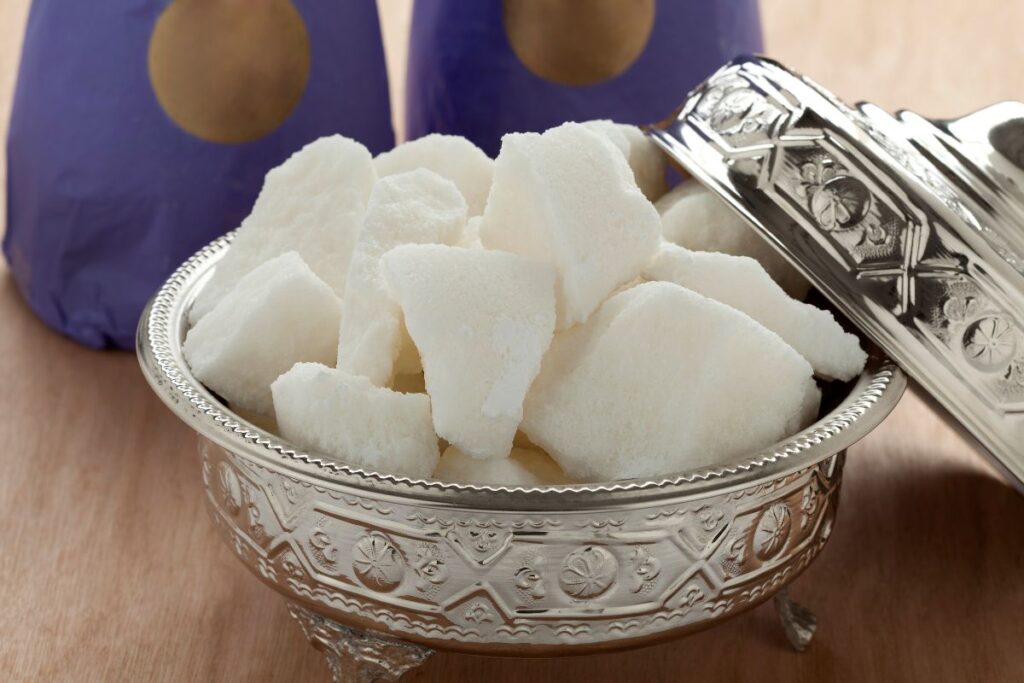
The Moroccan Tea Brewing Process: A Ceremony in Itself
Moroccan tea is more than just a drink; it’s a ritual, a ceremony that brings people together. The brewing process is an art form that is often passed down through generations. Here’s a glimpse of how it’s done:
- Boiling the Water: Fresh water is brought to a rolling boil in a special tea kettle called a “berrad,” typically made of brass or stainless steel. The bubbling sound of boiling water is a signal to the household that tea is being prepared.
- Rinsing the Tea: A small amount of green tea leaves is placed in a teapot, rinsed with a little hot water, and then discarded. This step is believed to cleanse the tea.
- The First Pour: The rinsed tea leaves are returned to the teapot, and hot water is added. The first infusion is allowed to steep for a few minutes and is then poured into a glass or a small decorative tea glass, known as a “beldi.”
- Adding Mint and Sugar: Fresh mint leaves and an ample amount of sugar are added to the teapot. The tea is then poured back and forth between the teapot and the glass several times to blend the flavors and create froth.
- The Second Pour: The tea is poured from a height, which aerates it and produces a characteristic bubbly froth on the surface. This step is repeated several times until the tea is perfectly blended, sweet, and frothy.
- Serving with Ceremony: Moroccan tea is traditionally served by the host with a graceful pour that begins high above the glass, creating a cascading stream of tea. The higher the pour, the more impressive the display.
Tea and Hospitality
Moroccan tea is not just about taste; it’s a symbol of Moroccan hospitality. Offering tea to guests is a time-honored tradition and a gesture of warmth and welcome. When you visit a Moroccan home or shop, it’s common to be offered tea as a sign of respect and friendship.
Moreover, the act of sharing tea transcends social and cultural boundaries. In Morocco, it’s customary to share tea with friends, strangers, and even travelers passing through. Tea serves as a medium for connecting with others, fostering conversations, and building relationships.
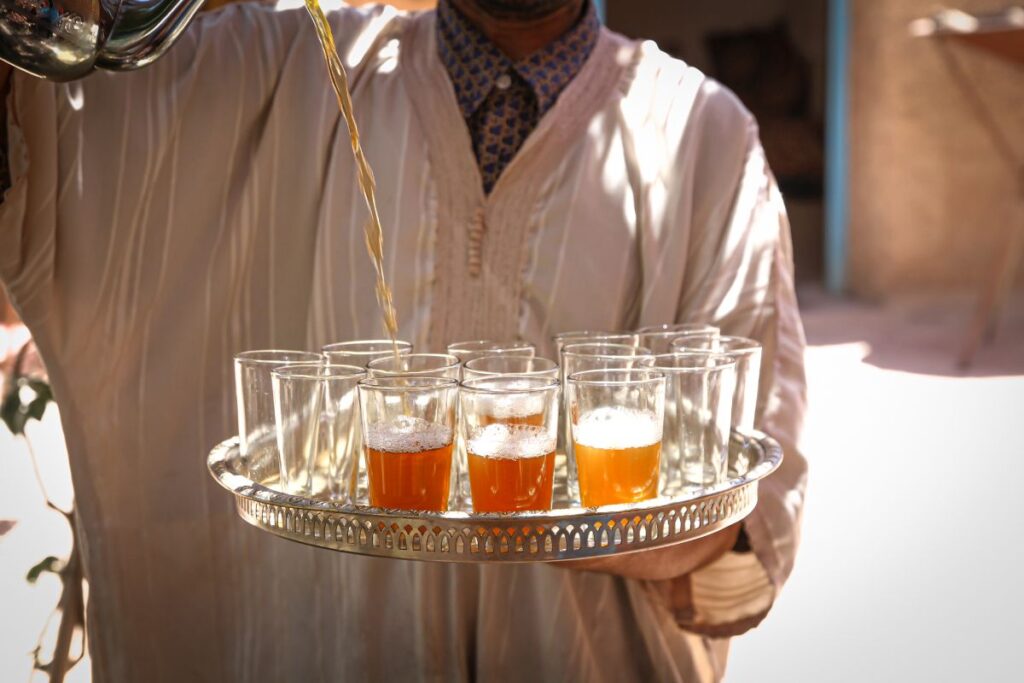
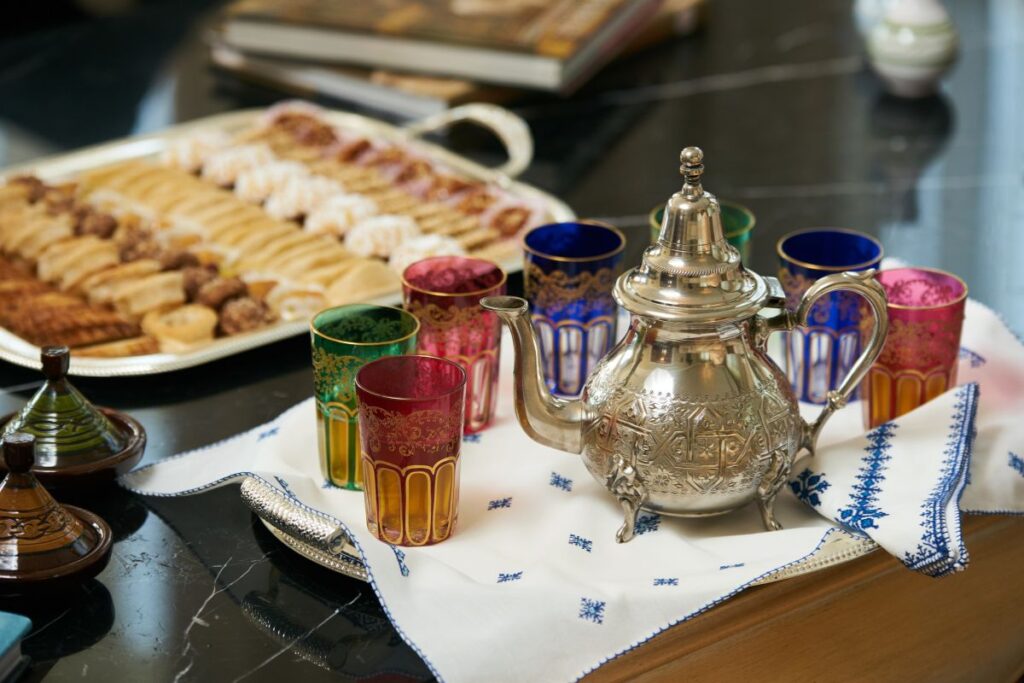
The Tea Culture in Morocco
Moroccan tea culture is deeply ingrained in daily life. From family gatherings to business meetings, from marketplaces to remote desert camps, tea is omnipresent. It’s a symbol of unity and a way to pause and connect in a fast-paced world.
In cafes, known as “qahwa,” tea is brewed and served throughout the day. These cafes are lively hubs of social interaction where people gather to savor tea and engage in spirited discussions.
Moroccan tea is more than just a beverage; it’s a reflection of Moroccan culture and tradition. It’s a testament to the importance of hospitality, the art of connection, and the role of tradition in daily life. The next time you savor a cup of Moroccan tea, you’ll be partaking in a centuries-old tradition that continues to bring people together in a culture that cherishes the simple act of sharing a cup of tea.
